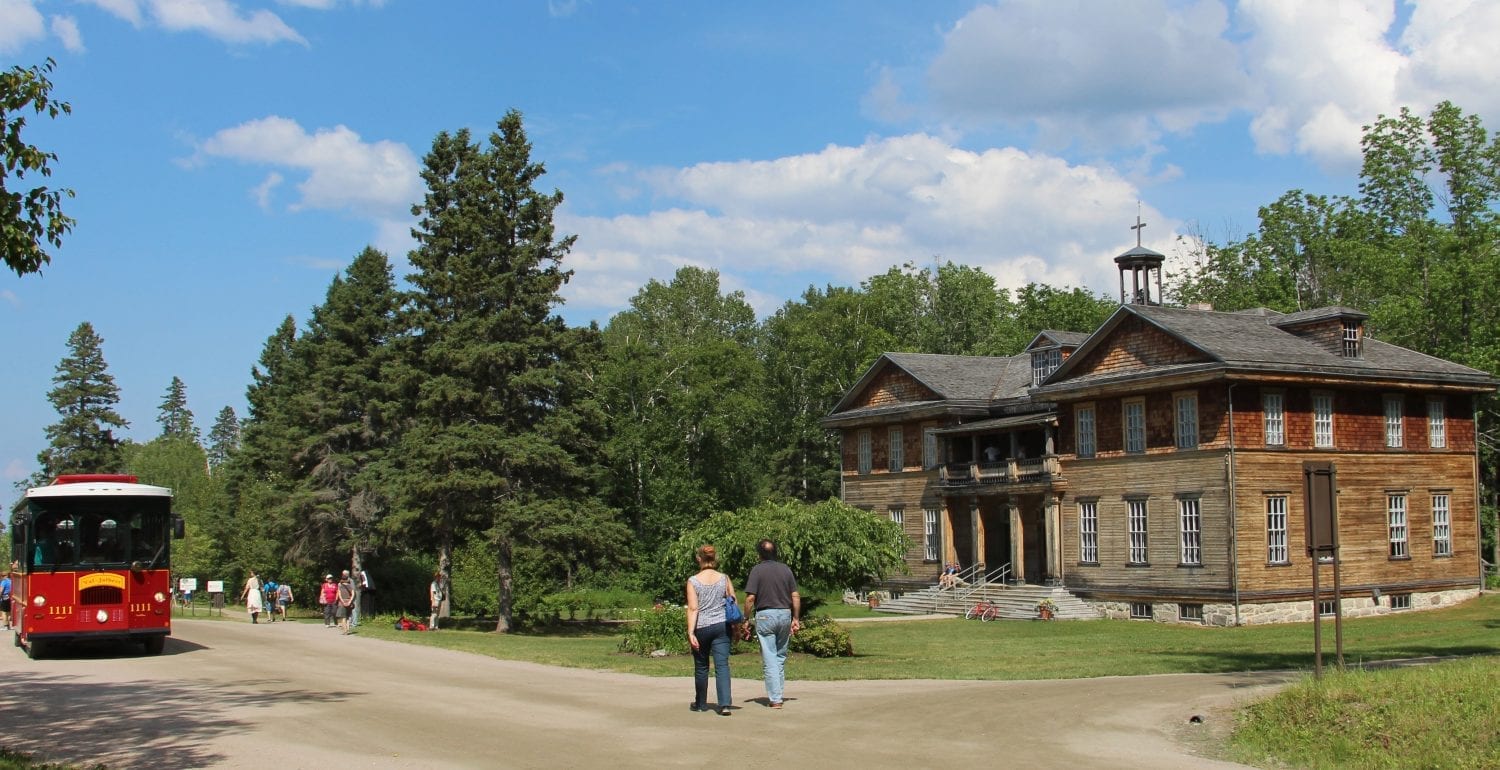Val-Jalbert, an authentic town resurrected

The “company town” of Val-Jalbert was designated a provincial heritage site because it has remained virtually intact since 1927, when the local pulp mill closed. Workers abandoned what were then ultra-modern homes the Company had built for them and Val-Jalbert became a ghost-town. In 1960, the Quebec government opened the site to the public, then gradually began restoring the buildings. Further improvements in recent years have made Val-Jalbert into a unique tourist attraction. Along with many fully restored buildings, an immersive historical show and actors portraying townsfolk, there are now on-site restaurants and guest rooms as well as a belvedere overlooking the magnificent 72-metre falls. This valued heritage attraction earned its designers several awards.
Learn more…
A big French-Canadian company
In the early 20thcentury, it was rare for French Canadians to own or run companies, but such was the case with the mill in Val-Jalbert, which produced mechanical pulp for the manufacture of paper. Its early owners, Damase Jalbert and Joseph-Édouard Dubuc’s Chicoutimi Pulp Company, built the mill and a state-of-the-art town to house workers between 1901 and 1924. After a series of financial problems, takeovers and attempts to relaunch, the pulp mill closed in 1927, and the town that had as many as 950 residents in 1926 had only 50 families by 1930. Twenty-two years later, the Quebec government took title and closed Val-Jalbert for nonpayment of taxes.
All 94 buildings in this company town, which remained frozen in time after the mill closed and most of its residents had rapidly departed, has been turned into a big, bustling historic site, where visitors can see how the mill operated, how the workers and their families lived, and how the community functioned, all in a beautiful natural setting.
The many facets of this heritage jewel
The heritage value of Val-Jalbert is what motivated its development into a tourist attraction. Its mill is significant for being one of the few French-Canadian-owned companies at that time, as well as for the forward-looking vision of its owners: town planning, electric lighting in streets and houses, water and sewer systems, running water in all homes, hydrants for fire-fighting, wooden sidewalks, a paved main street, a hotel and a convent school. The fascinating story of the town’s development and rapid decline is summarized in a multimedia immersive show and played out live by actors, mainly in the convent school, the post office and the hotel/general store.
Machinery and facilities preserved on-site in the mill give visitors a clear picture of the work environment and tools of the labourers, who were paid the highest wages in the area. A mock-up details the entire process of pulp production, packaging and shipping by rail and boat to Canadian and foreign markets, showing how a large-scale industrial plant operated in the 1920s. A display features a number of artifacts found in the mill and the town, including tools, utensils, an adding machine and items of clothing.
A ride on the trolleybus gives visitors an initial overview of the town, which they can then tour on foot. Strolling through the streets, entering buildings open to the public, and stopping to chat with costumed actors, they can explore at their own pace the many heritage and natural assets of Val-Jalbert. They can even stay overnight in one of the well-appointed guestrooms created in period homes on Rue Saint-Georges.
A harmonious blend of old and new
A cable car takes visitors up to the belvedere overlooking the 72-metre Ouiatchouan falls, with views of the town, its wooded surroundings and Lac Saint-Jean. The belvedere can also be reached by a long set of steps.
Since 2015, a mini-hydroelectric power station has been operating at the base of the falls, designed so as to avoid impacting on the unique character of the historic town of Val-Jalbert. A profit-sharing agreement will help fund the maintenance and long-term development of the town. Inside the station, visitors can see the present-day turbine hall as well as the old turbine room from 1901. A visitor centre at the entrance to the site and a superb campground on the banks of the Rivière Ouiatchouan, a short distance away, round out the site’s present-day facilities.





